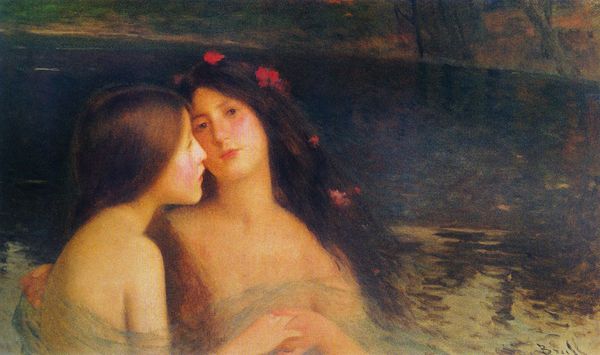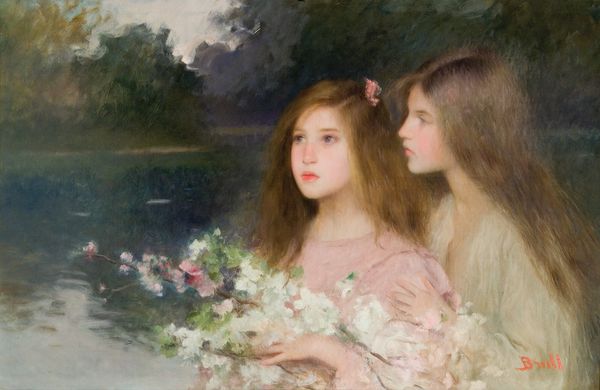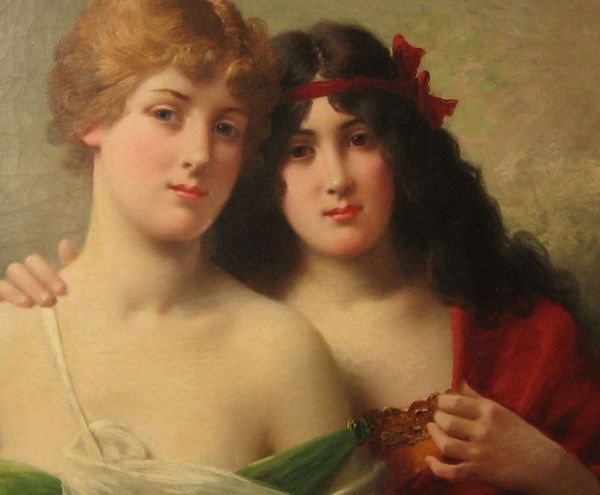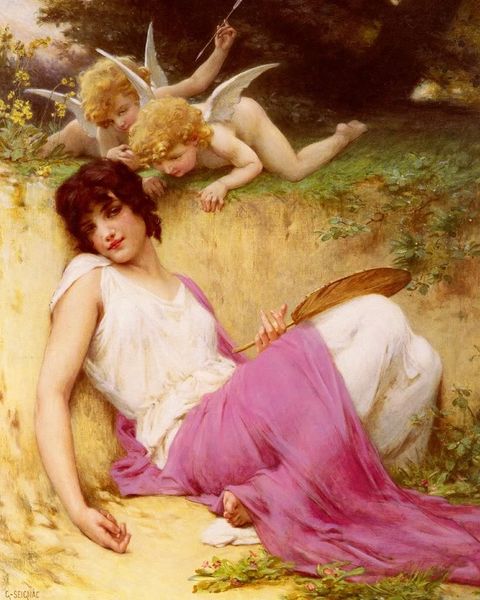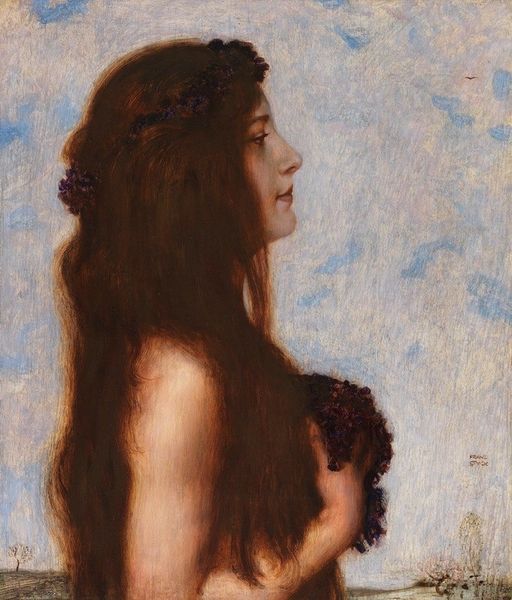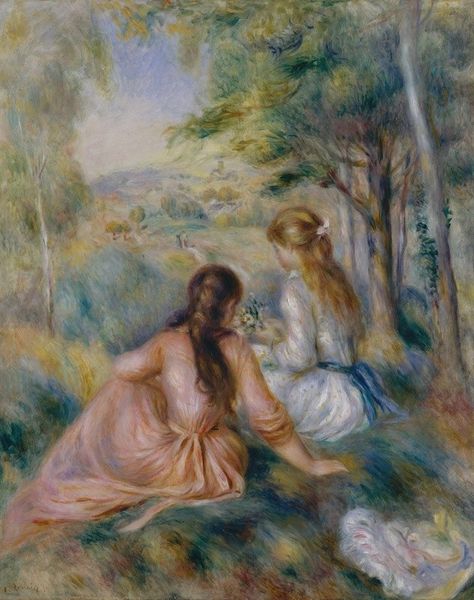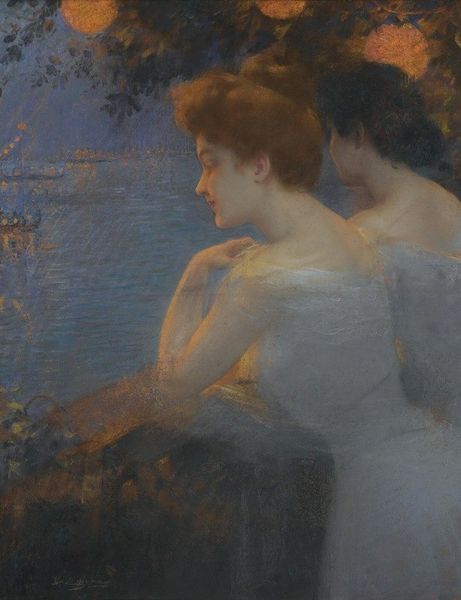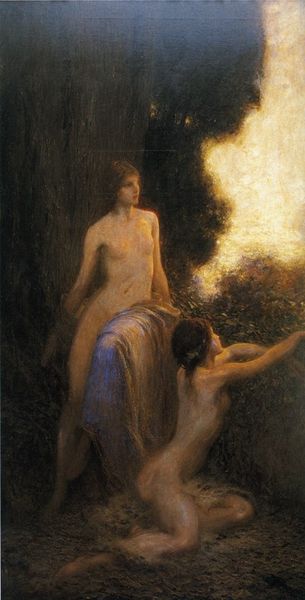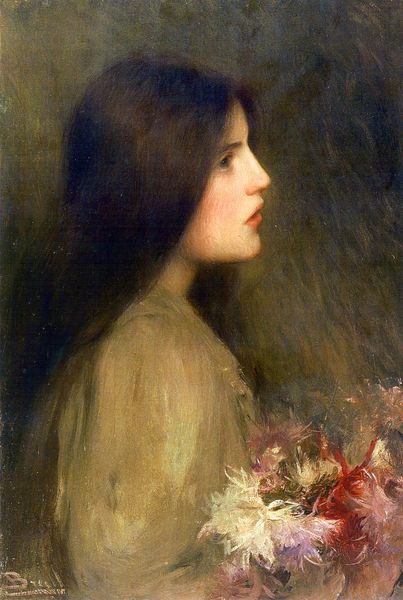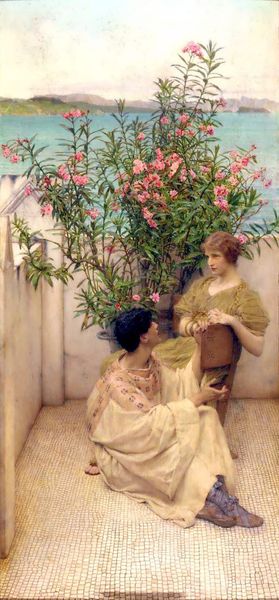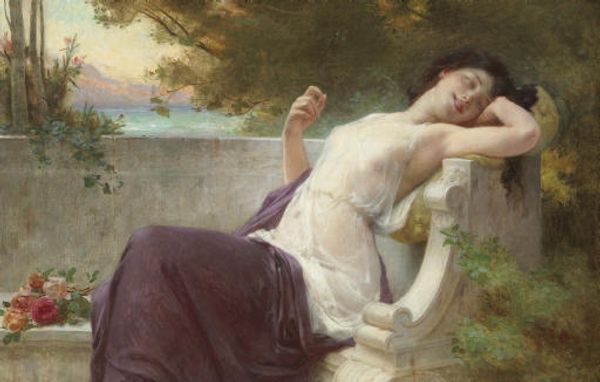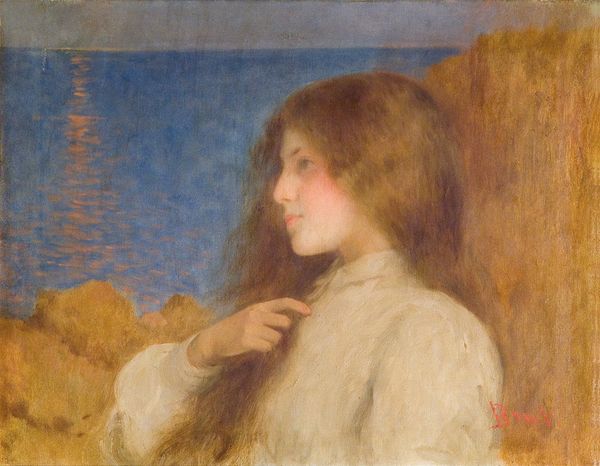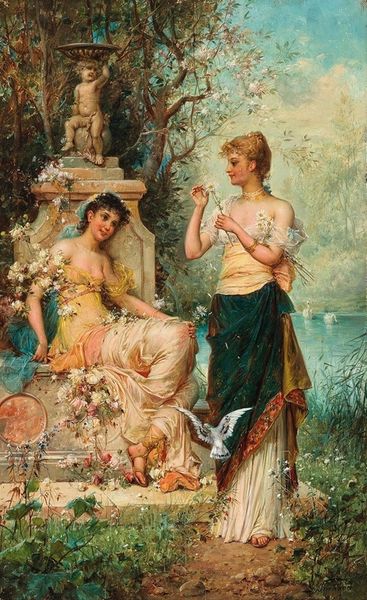
Copyright: Public domain
Curator: Standing before us, we have "Oleanders," an oil painting created around 1904 by Joan Brull. Editor: The palette is surprisingly muted. It gives the whole canvas a soft, almost dreamy quality, like a half-remembered scene. I wonder about his pigment choices, were they locally sourced? Curator: Well, beyond the aesthetic impression, Brull was quite immersed in the Symbolist movement. "Oleanders" reflects that interest. It presents these two women within an allegorical landscape that moves us away from the explicit concerns of industrial society. Note how this ties into larger artistic currents. What we're observing aligns itself to institutional settings like the *Salons* that encouraged these kinds of representations. Editor: And these aren't just *any* women, are they? The way they're draped suggests something...classical. Is he referencing specific mythological figures, or more generally evoking a sense of timeless femininity? Looking at his technique: Brull's application of paint— particularly noticeable in the background of impressionistic brush strokes to outline of the foreground figure — seems meticulously layered to evoke depth while maintaining this almost unreal quality. It's about both opticality *and* production of effect. What supports was he working on, linen or canvas? Curator: Undoubtedly, he’s leaning into those historical associations, yes. And if you consider Brull's societal position within the Catalan art world, you might ask: what's at stake in visualizing women this way? Does he challenge or reinforce existing ideas about femininity in this political setting, through display in institutions like the Barcelona Salon? This context certainly provides meaning, whether explicitly stated or implied. Editor: Hmm, so less an ethereal scene and more an ideological proposition expressed through these models? I do appreciate knowing more about the canvas construction too—it informs our appreciation. These choices reflect the materials readily available and contribute directly to his finished piece. Curator: Precisely, these material choices tell a rich history. I appreciate how you connect Brull’s materiality, not only to the formal outcome we experience, but also to his own position in turn. Editor: Agreed. Understanding the how as much as the what offers new layers of interpretation and deepens appreciation.
Comments
No comments
Be the first to comment and join the conversation on the ultimate creative platform.
